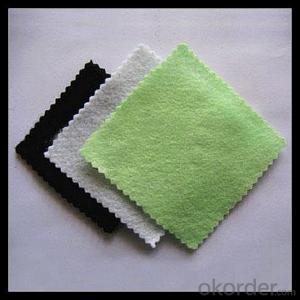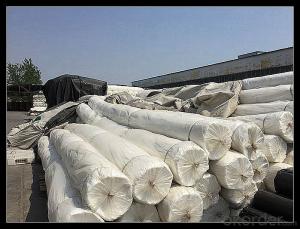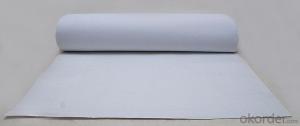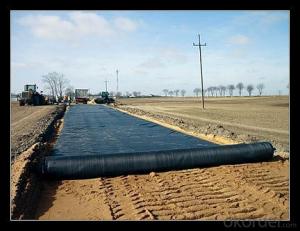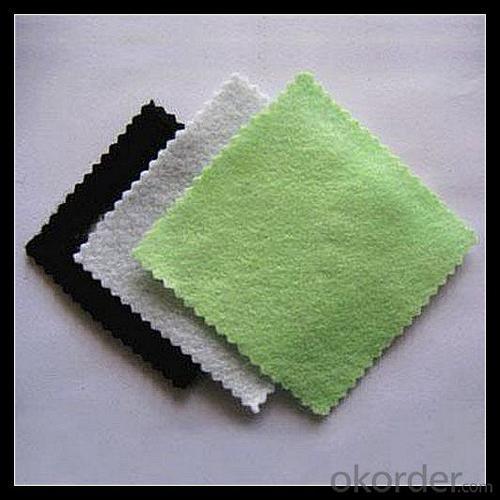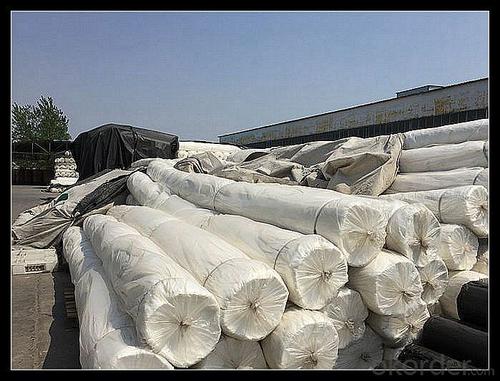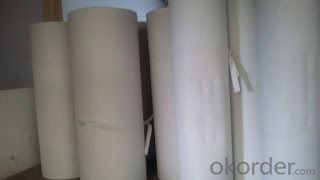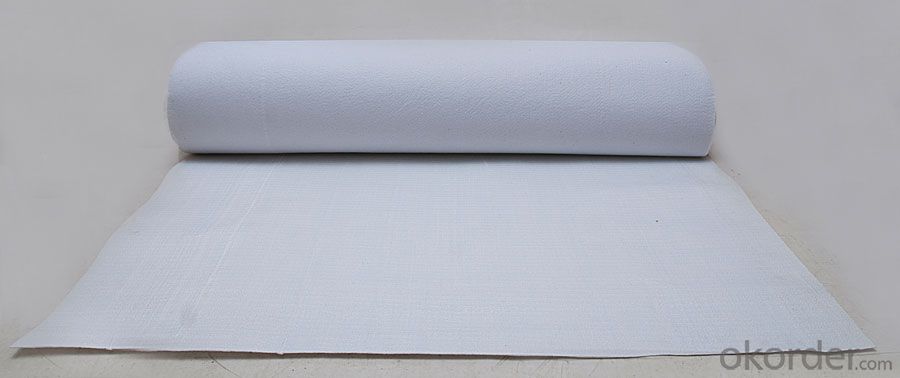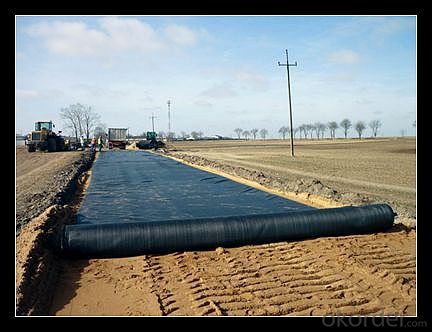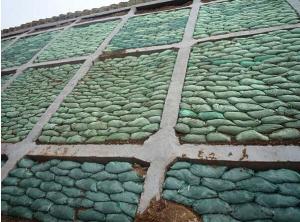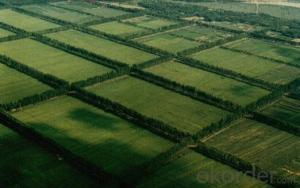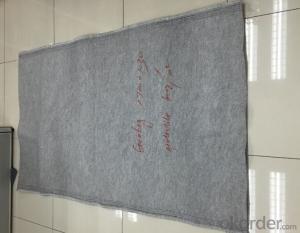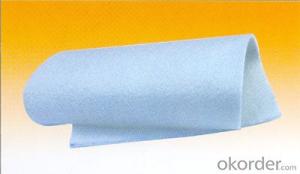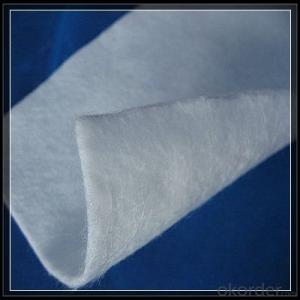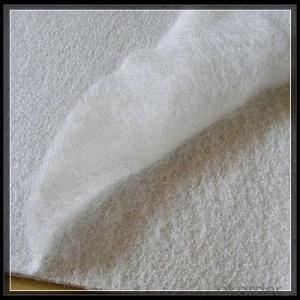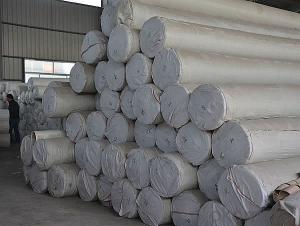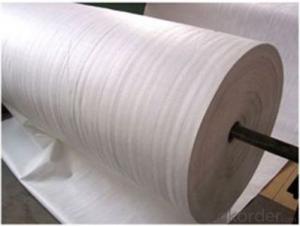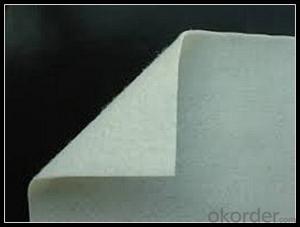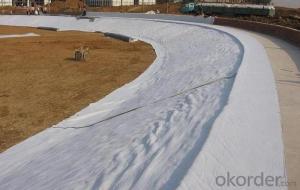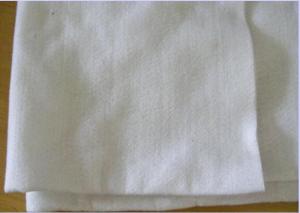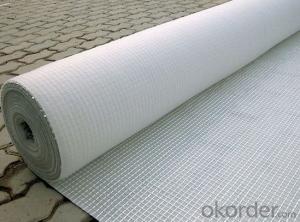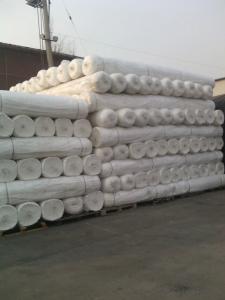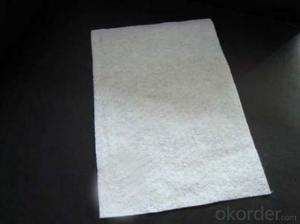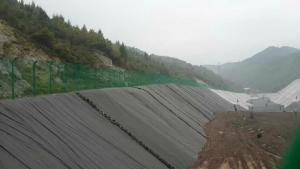Geotextil Antihierbas Non-Woven Geotextile Fabric with High Stabilization PP
- Loading Port:
- China main port
- Payment Terms:
- TT OR LC
- Min Order Qty:
- 1000 m²
- Supply Capability:
- 1000000 m²/month
OKorder Service Pledge
OKorder Financial Service
You Might Also Like
Specification
geotextiles are permeable nonwoven fabrics used to separate, filter, reinforce, protect,
or drain. Geotextiles allow filtration / separation of granular layers in roads and rail
applications, used to protect membranes in landfill applications, used in coastal defence
applications and used in Landscaping to protect surfaces and structures from weeds and
root growth.
Separation
CNBM Geotextile acts as a separator between two layers of soil that have different
particle size distributions. CNBM Geotextiles are used to prevent road base materials from
penetrating into soft underlying sub grade soils, thus maintaining design thickness and
roadway integrity. Separators also help to prevent fine-grained sub grade soils from being
pumped into permeable granular road bases.
separation
Filtration
CNBM Geotextile acts similar to a sand filter by allowing water to move through the soil
while retaining all upstream soil particles. CNBM Geotextiles are used to prevent soils
from migrating into drainage aggregate or pipes while maintaining flow through the system.
TexoFib Geotextiles are also used below rip rap and other armour materials in coastal and
river bank protection systems to prevent soil erosion.
filtration
Reinforcement
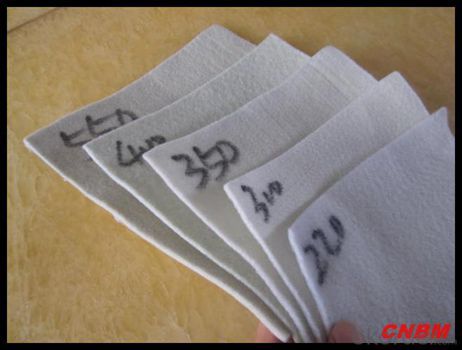
Our Service
Quality assurance
1.On a regular basis or as per your request,we entrust national testing agencies to conduct quality inspections
2. Strictly in accordance with the ISO9001-2008 international quality system standard,we monitor and manage the whole process throughout production,quality testing,and measurement to ensure product quality
3. For quality-related construction delay or substandard construction(except for damage or losses due to customer’s responsibility or irresistible natural disasters),we have refunding,replacement,and repair services.We will respond to customers’ feedbacks on quality issues within 24 hours.
Q: What kind of payments does jenor support?
A: T/T, L/C, Cash are accepted.
Q: Do you charge for the samples?
A: Accordeing to our company policy, the samples are free, we only charge the freight fee. And we will return the freight fee during the next order.
Q: Can you produce according to customers' design?
A: Sure, we are professional manufacturer, OEM and ODM are both welcome.
Q: Do you have other products?
A: Yes, please check the pictures:
- Q: Highway on the highway geotextile laying program who has ah?
- According to your actual project, the Hongxiang Expressway geotextile can provide the overall solution. Hongxiang new material solution
- Q: What are the quality control measures for geotextile manufacturing?
- Some quality control measures for geotextile manufacturing include thorough testing of raw materials, regular inspections of production processes, and adherence to industry standards and specifications. Additionally, ensuring proper calibration and maintenance of manufacturing equipment, conducting quality checks at various stages of production, and implementing robust quality management systems are essential for maintaining the desired quality and performance of geotextile products.
- Q: Road with a geotextile cloth is a cloth or non-woven fabrics
- Geotextile is a non-woven category, geomembrane is divided into light film, and a cloth a film, two cloth a film, two cloth is a film in the middle of the membrane, both sides of the geotextile composite products. Huazhi geotextile material manufacturers
- Q: Can geotextiles be used in riverbank stabilization projects?
- Yes, geotextiles can be used in riverbank stabilization projects. Geotextiles are often employed to reinforce and protect soil in various civil engineering applications, including riverbank stabilization. They can help prevent erosion, control sediment movement, and provide stability to riverbanks by improving soil strength and drainage.
- Q: Can geotextiles be used in green roof systems?
- Yes, geotextiles can be used in green roof systems. Geotextiles are often used as a protective layer between the roof membrane and the growing medium or drainage layer in green roof systems. They help prevent clogging, promote water drainage, and provide additional reinforcement to the roof structure.
- Q: Can geotextiles be used in coastal erosion control in beach nourishment projects?
- Yes, geotextiles can be used in coastal erosion control in beach nourishment projects. Geotextiles are commonly used as a protective barrier to prevent erosion and stabilize the shoreline. They can be placed under the sand or gravel layer in beach nourishment projects to enhance the stability and longevity of the beach, reducing the impact of wave action and promoting sediment retention.
- Q: Geotextile detection frequency
- GB / T-2009 / ISO9862: 2005 does not specify the frequency, but according to the general provisions of the construction material is required to declare the material inspection, the specific number of consultation with the testing agency, the general geotextile detection: thickness (sample length 1m, (Sample length 1m, the number of samples 10 10 × 10), tensile properties (wide stretch, trapezoidal tear (sample length 2m, the number of samples vertical and horizontal to the five blocks ))
- Q: Project, what is the use of permeable geotextile?
- In fact, geotextile has six main functions: 1. Isolation 2. Filter 3. Drain 4. Reinforcement 5. Protection 6. Closed. Can be applied to the four areas 1, water conservancy projects: seawall, embankment, lake embankment project; reservoir reinforcement project; reclamation project; flood control. 2, highway and railway airport engineering: soft foundation reinforcement; slope protection; road anti-reflective crack structure layer; drainage system; green isolation zone. 3, electrical engineering: nuclear power plant basic engineering; thermal ash dam project; hydropower project. 4, port waterway project: port. What you said is the drainage of water it. Is to rule out the excess water, to prevent soil erosion!
- Q: What are the key considerations for geotextile installation in seismic retrofitting projects?
- The key considerations for geotextile installation in seismic retrofitting projects include the selection of appropriate geotextile materials that can withstand high seismic forces, ensuring proper installation techniques to prevent slippage or failure during an earthquake, and considering the compatibility of geotextiles with other retrofitting techniques to provide a comprehensive and effective seismic upgrade. Additionally, factors like site-specific conditions, design requirements, and regulatory guidelines must be taken into account for successful geotextile installation in seismic retrofitting projects.
- Q: Are geotextiles resistant to rodent damage?
- Yes, geotextiles are generally resistant to rodent damage due to their strong and durable construction.
Send your message to us
Geotextil Antihierbas Non-Woven Geotextile Fabric with High Stabilization PP
- Loading Port:
- China main port
- Payment Terms:
- TT OR LC
- Min Order Qty:
- 1000 m²
- Supply Capability:
- 1000000 m²/month
OKorder Service Pledge
OKorder Financial Service
Similar products
Hot products
Hot Searches
Related keywords
